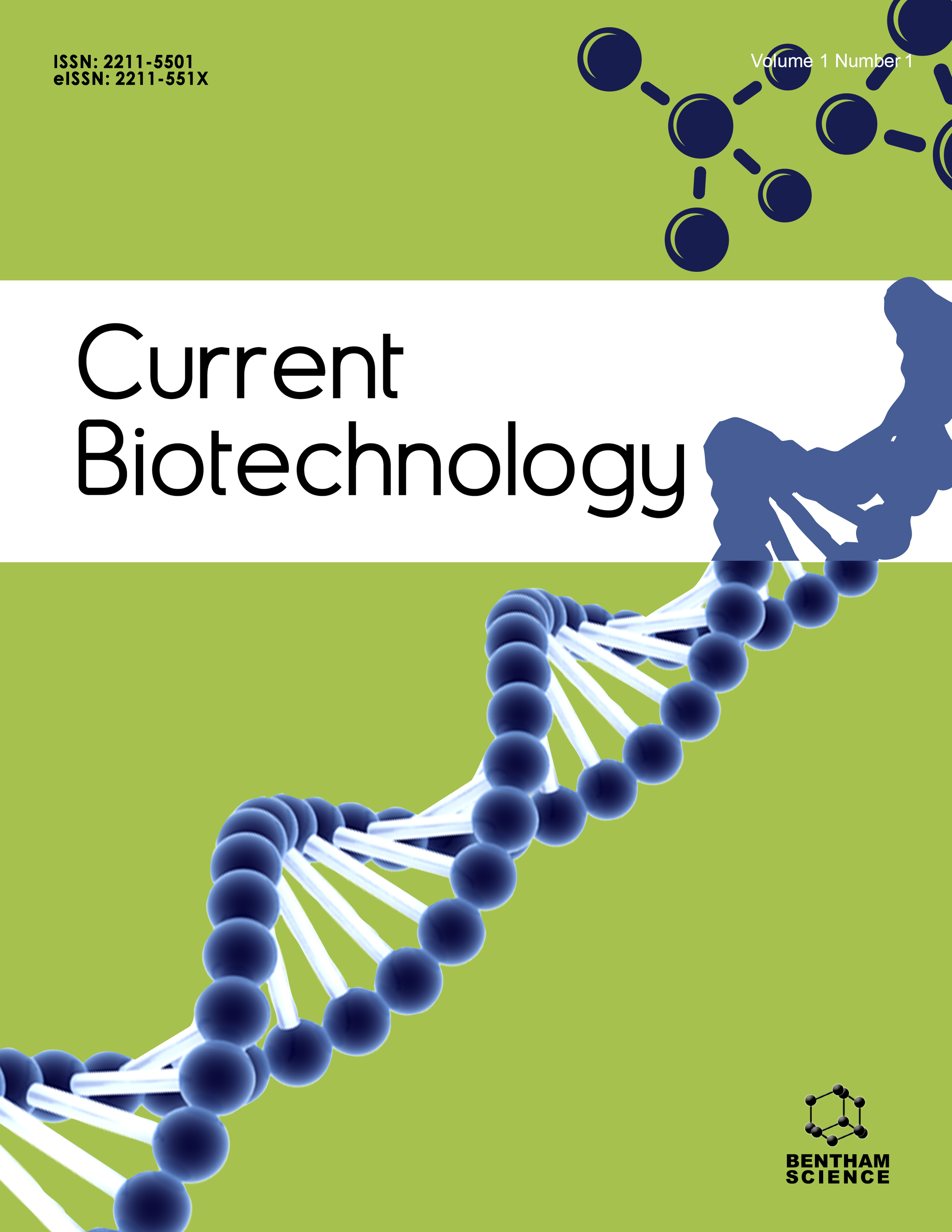- Home
- A-Z Publications
- Current Biotechnology
- Previous Issues
- Volume 5, Issue 1, 2016
Current Biotechnology - Volume 5, Issue 1, 2016
Volume 5, Issue 1, 2016
-
-
Duckweed: A Tool for Ecotoxicology and a Candidate for Phytoremediation
More LessAuthors: Cinzia Forni and Franca TommasiBackground: Duckweed is the common name for Lemnaceae, a plant family consisting of five major genera: Lemna, Spirodela, Wolffia, Wolffiella and Landoltia. They are the world's smallest and simplest flowering plants with a high growth rate under appropriate environmental conditions. Duckweed can be used as a feed source for livestock and poultry, as well as biomass for production of biofuel and recombinant proteins Read More
-
-
-
Neutralizing Antibodies in HIV Treatment
More LessBackground: When a human being is infected with a virus, antibodies are produced against many epitopes or multiple virus proteins. A subset of these antibodies can block virus infection by a process that is called neutralization. Recent research has proved that Human antibodies to human immunodeficiency virus-1 (HIV-1) can neutralize a broad range of viral isolates in vitro and protect non-human primates against infectio Read More
-
-
-
Impact of Light-Emitting Diodes (LEDs) and its Potential on Plant Growth and Development in Controlled-Environment Plant Production System
More LessAuthors: Avinash Agarwal and S. Dutta GuptaBackground: Canopy light environment plays a crucial role in plant growth and development. Gasdischarge lamps (GDLs) are typically used in controlled-environment crop production system for illuminating crops. GDLs have broad emission spectra and heat-up significantly during operation. The advent of light-emitting diodes (LEDs) has provided the means for developing a lighting system for growing crops that is Read More
-
-
-
Nanoparticle Coated Viral Vectors for Gene Therapy
More LessBackground: Recent advances in nanotechnology and gene therapy have created new avenues for therapeutics. However, only a few studies have combined these successful systems for biomedical applications. This review presents an overview of currently available nanoparticle-vector hybrid delivery strategies, the challenges and potential solutions to their widespread use. Methods: A comprehesive analysis of literarure on the Read More
-
-
-
Clostridium ljungdahlii: A Review of the Development of an Industrial Biocatalyst
More LessAuthors: Jason M. Whitham, Joel J. Pawlak and Amy M. GrundenBackground: Autotrophic Clostridia are of considerable interest for use in renewable biofuel and biocommodities production. One such autotrophic Clostridium, Clostridium ljungdahlii, was the first to be identified as an ethanologenic acetogen and has been extensively studied as a microbial catalyst for the conversion of biomass derived synthesis gas to biofuels. To better exploit this bacterium for bulk chemicals (including bio Read More
-
-
-
Comparative Evaluation of Neglected Biomass for Efficient and Economically Viable Production of Lignocellulolytic Enzymes from Selected White and Soft Rot Fungi
More LessAuthors: Folasade M. Olajuyigbe and Olusola A. OgunyewoBackground: Agricultural activities generate large amounts of biomass residues and improper management of the biomass contributes to water, soil and air pollution. The quest to manage waste agricultural biomass and convert it into bioresource is therefore of great concern. Methods: Fourteen fungal species isolated from decaying wood were identified and production of extracellular lignocellulolytic enzymes from the Read More
-
-
-
Purification and Characterization of Lipase from thermophilic Geobacillus sp.
More LessAuthors: Akshita Mehta, Nitin Kumar Saun and Reena GuptaBackground: Thermostable alkaline lipases have commercial value and find applications in various industrial and biotechnological sectors such as additives in detergents and food industries, environmental bioremediations and in molecular biology. To use any lipase for esterification or any other application, it is important to purify and characterize the enzyme and study its properties. The aim of this paper to purify and char Read More
-
Most Read This Month
Article
content/journals/cbiot
Journal
10
5
false
en


